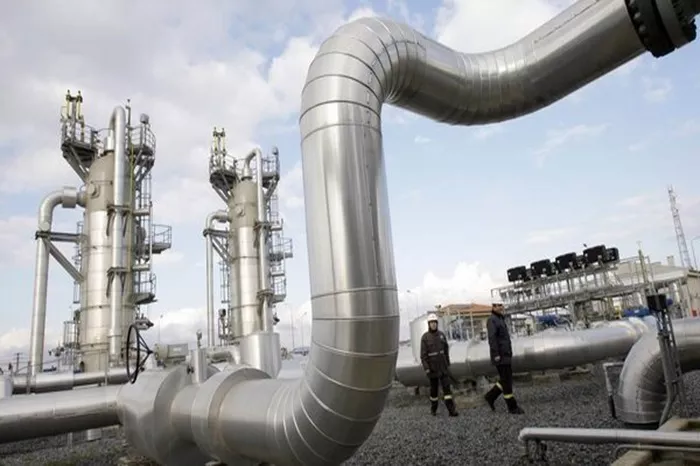Natural gas futures dropped on Thursday as traders turned their attention to potential supply increases from the Mountain Valley Pipeline (MVP) and awaited the U.S. Energy Information Administration’s (EIA) weekly storage report. Despite this recent decline, the market remains supported by forecasts of record heat through June, suggesting a possible “buy the dip” opportunity.
As of 12:22 GMT, natural gas futures were trading at $2.971, down $0.074 or 2.43%.
EIA Weekly Storage Report
Analysts forecast a 75 billion cubic feet (Bcf) increase in natural gas storage, following last week’s 98 Bcf rise, bringing total working gas in storage to 2,893 Bcf. This level is 373 Bcf higher than last year and 581 Bcf above the five-year average. The current storage exceeds the five-year historical range, indicating a strong supply.
Weather Outlook
From June 13-18, a hot ridge is expected to dominate California and the southern U.S., with temperatures soaring into the 90s and 100s. The Great Lakes to the Northeast will see moderate weather with highs in the 70s and 80s. Most of the U.S. will experience above-normal temperatures this weekend and next week, except for the cooler Northwest. Overall, demand is anticipated to be moderate through Thursday, increasing significantly thereafter.
MVP Start-Up Preparations
The $7.85 billion Mountain Valley Pipeline is nearing operational status after receiving regulatory approval. Spanning from West Virginia to Virginia, the 2.0 billion cubic feet per day (bcfd) pipeline has faced delays since 2018 due to regulatory and legal challenges. Equitrans Midstream, the lead partner, announced that final preparations are underway, although the exact start date remains unspecified.
Production Adjustments
EQT, the largest gas producer in the U.S., has resumed production that was previously curtailed this year. Some of this increased output is expected to flow through the MVP, although analysts from EBW Analytics caution that downstream pipeline constraints may prevent the MVP from reaching full capacity during the summer.
Market Forecast
With the MVP’s imminent operation and substantial gas storage levels, the near-term outlook for natural gas is bearish. Although demand is expected to rise with increasing temperatures, the additional supply from the MVP and high storage levels may suppress prices. Traders should closely monitor storage reports and pipeline developments for any shifts in supply.
Technical Analysis
Natural gas futures are edging lower for a second session on Thursday, potentially testing the 200-day moving average (MA) at $2.944. This long-term trend indicator is crucial for determining the market’s near-term direction.
Since the trend is upward, a technical bounce is likely on the first test of the 200-day MA. If it holds, it will indicate genuine buying interest rather than merely triggered buy stops. Failure to maintain the 200-day MA could lead to a test of a pivot at $2.840.
Trading Caution
Trading derivatives carries a high level of risk to your capital, and you should only trade with money you can afford to lose. Ensure you fully understand the risks involved and seek independent advice if necessary. A Product Disclosure Statement (PDS) should be considered before entering into any transactions.
In summary, while the natural gas market faces bearish pressures from anticipated supply increases and high storage levels, upcoming weather patterns and technical indicators could offer strategic trading opportunities.
Related topics:
EIA: Ethanol Production Down 5%, Stocks and Exports Up
BOEM Advances Offshore Wind Energy in Central Atlantic Region
EIA: Ethanol Production Rose Slightly, Stocks And Exports Fell

